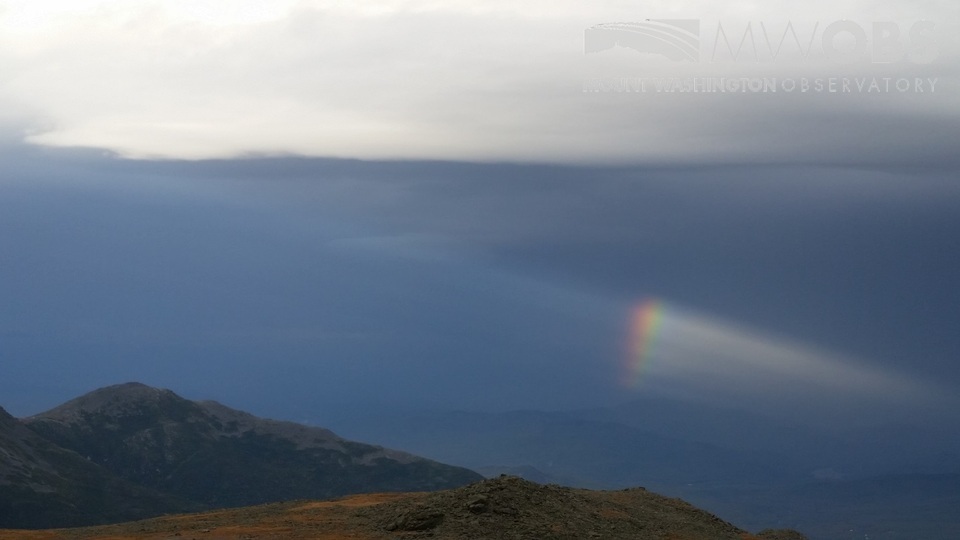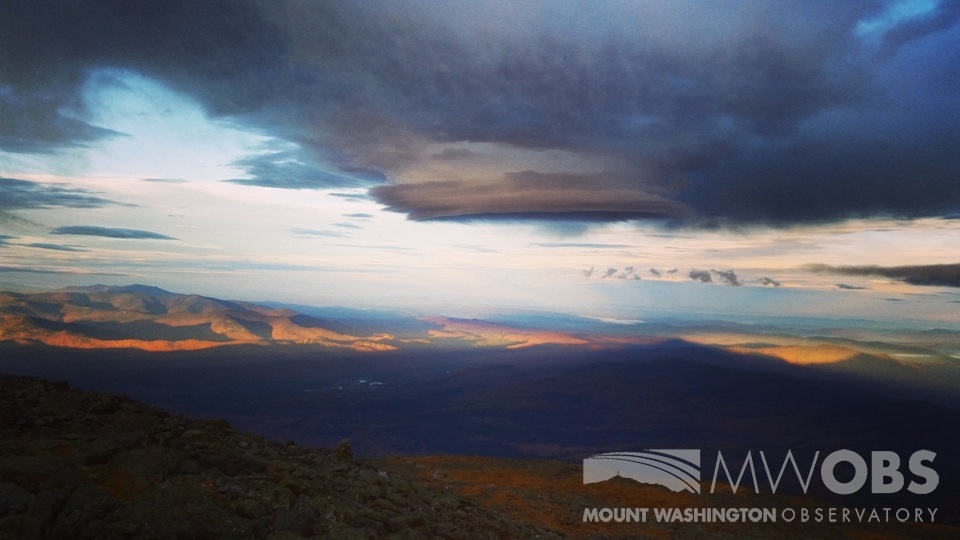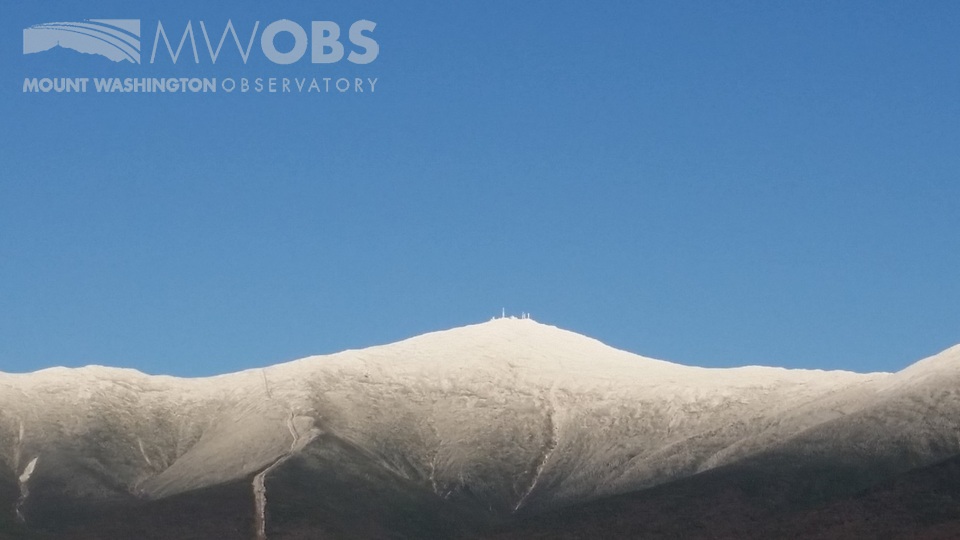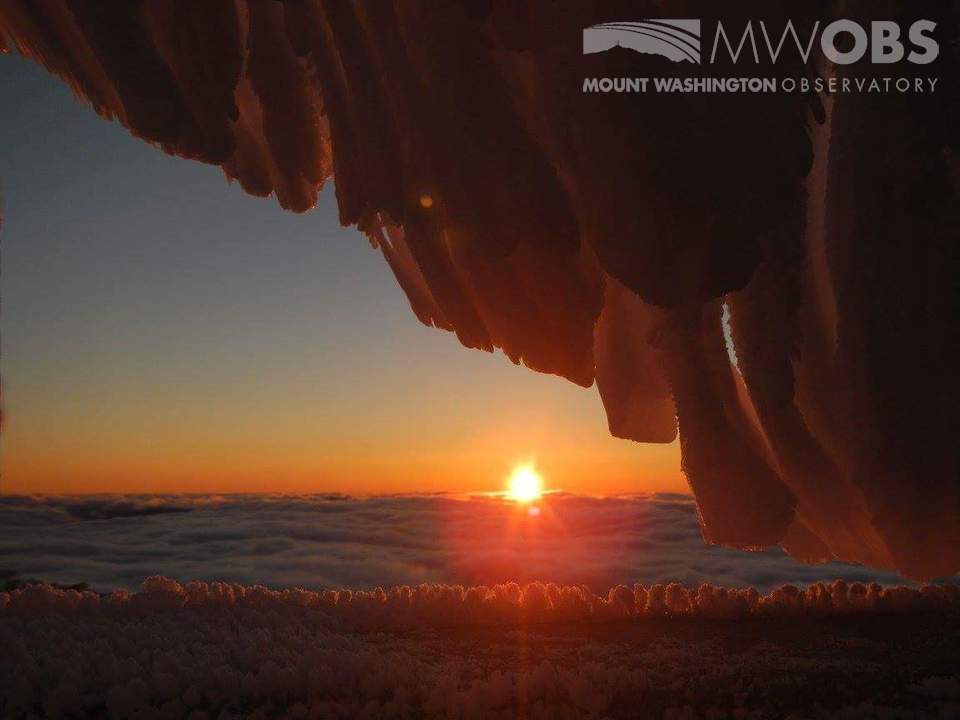Seasonal Changes On The Summit
2015-11-10 17:35:13.000 – Andrew Henry, Summit Intern
 Partial rainbow and crepuscular rays at the end of summer
Partial rainbow and crepuscular rays at the end of summer Lenticular cloud with fall foliage below
Lenticular cloud with fall foliage belowVolunteers join the observatory staff again in December as the Observatory prepares for the winter trip season, which will bring a return of occasional small groups of visitors to the summit. The winter Observatory staff will consist of three observers, one intern, and two volunteers until mid-May when the Mt Washington Auto Road and Cog Railway reopen for the summer season, giving visitors easier access to the summit. As visitors to the summit increase, the Extreme Mount Washington exhibit will reopen for the season and the Observatory will return to its summer staff consisting once again of three weather observers, two interns, a museum attendant, and two volunteers.
 Mount Washington with a fresh blanket of snow and rime ice
Mount Washington with a fresh blanket of snow and rime iceNot only do the changing seasons bring changes in weather and the amount of staff at the Observatory, but I find my daily tasks have changed slightly as well. At the onset of my internship with the observatory in late August, I found myself working in the Extreme Mount Washington Museum and giving tours of the Observatory in addition to composing an afternoon forecast for the higher summits of the White Mountains and helping with observations when I could. Now that the museum is closed and there are no visitors to to provide tours to, I find I have much more time to focus on the meteorological aspects of my internship, such as becoming a better forecaster, and learning how to observe the weather. Additional tasks that the cold weather brings include deicing the instrumentation and shoveling snow away from our fire exits, both of which are tasks I thoroughly enjoy. I have always been an extreme weather enthusiast and nothing I have experienced gives quite the adrenaline rush of deicing the instrument tower in high winds, sub-freezing temperatures and visibilities near zero.
 Sun setting into a sea of undercast with rime ice in the foreground
Sun setting into a sea of undercast with rime ice in the foreground
Andrew Henry, Summit Intern
Team Flags Return for Seek the Peak’s 25th Anniversary
Team Flags Return for Seek the Peak's 25th Anniversary By MWOBS Staff Mount Washington Observatory is looking forward to continuing a much-loved tradition for Seek the Peak’s 25th Anniversary: Team flags. In inviting teams
Meet Summer Interns Zakiya, Max and Maddie
Meet Summer Interns Zakiya, Max and Maddie By MWOBS Staff We are excited to welcome six teammates to the summit of Mount Washington this summer! During their internship, these students and graduates will play
Saying Goodbye to the Summit
Saying Goodbye to the Summit By Alexis George After an extraordinary last three years working as a Weather Observer and Meteorologist, I am excited to pursue a different career. As sad I as am




